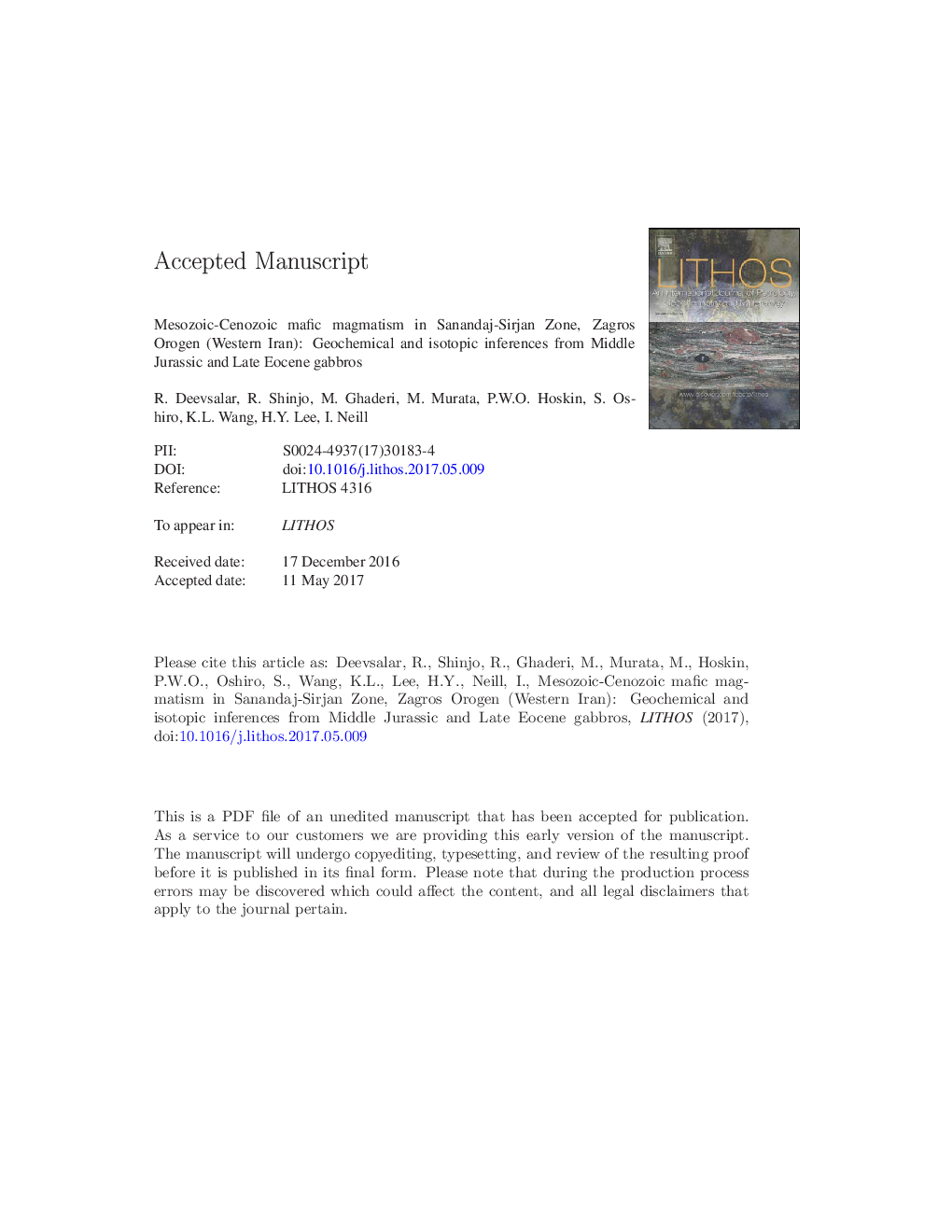| Article ID | Journal | Published Year | Pages | File Type |
|---|---|---|---|---|
| 5784060 | Lithos | 2017 | 70 Pages |
Abstract
One of the consequences of Neo-Tethys ocean subduction beneath the Central Iranian Micro-continent (CIMC) is the development of rare gabbroic intrusions in the Malayer-Boroujerd Plutonic Complex (MBPC) located in the Sanandaj-Sirjan Zone (SaSZ) of the Zagros Orogenic belt. The MBPC is a suite of extensive felsic and lesser mafic magmatic products in the northern SaSZ with geochemical signatures of arc-like magmatism during the Middle Jurassic (Ghorveh-Aligudarz arc) and intraplate type in the Late Eocene. Middle Jurassic gabbros (non-cumulate and cumulate) have low-Ti concentrations (< 1 wt.%) and quite uniform isotopic compositions (initial 87Sr/86Sr: 0.7035-0.70593 and εNd(t): â 6.18 to â 0.7), enriched LILE relative to HFSE, variable fractionation between the LREE and HREE ((La/Yb)cn: 2.27-7.45) and both negative to positive Eu anomalies. These distinctive features of arc-type magmatism are consistent with a subduction-modified mantle source for these rocks. Trace element and REE models indicate ~ 15% melting of a metasomatized amphibole-bearing garnet-spinel lherzolite (garnet:spinel ~ 7:3) in the sub-arc mantle wedge. The cumulate gabbros and non-cumulates belong to common liquid line of descent, with complementary trace element patterns. Much of the variation between samples can be modeled by fractional crystallization (FC) of a common parent; only one cumulate gabbro from this suite exhibits isotopic evidence of contamination, probably by Rb-depleted crustal materials. The Late Eocene gabbros have relatively high-Ti (> 1 wt.%) and display isotopically depleted Sr-Nd values (initial 87Sr/86Sr: 0.7044-0.7087, εNd(t): 1.9 -+3.2, barring one crustally-contaminated sample). OIB-like trace element characteristics such as enriched HFSE, and only minor enrichment of LILE and LREE, reflect a within-plate character and asthenospheric source. Trace element modeling indicates small degree melting (fmelting: 0.05) of upper mantle lherzolite (garnet:spinel ~ 3:1) followed by higher degree melting (fmelting: 0.15) at shallower depths (garnet:spinel ~ 4.5:2). The Eocene parental magma underwent FC of olivine and clinopyroxene. We propose that Eocene asthenospheric upwelling was triggered by slab tearing in response to slab-rollback, which is elsewhere reported to have triggered a 'flare-up' of extension-related magmatism across Iran. Three stages of tectono-magmatic evolution in the Ghorveh-Aligudarz arc segment of the N-SaSZ are represented by: 1) arc-like magmatism during active subduction of the Neo-Tethys seaway at Middle Jurassic, 2) magmatic quiescence during an interval of shallow-angle or highly oblique subduction during the Cretaceous-Paleocene, and 3) asthenosphere melting during slab tearing shortly before the onset of the Arabia-Eurasia collision.
Related Topics
Physical Sciences and Engineering
Earth and Planetary Sciences
Geochemistry and Petrology
Authors
R. Deevsalar, R. Shinjo, M. Ghaderi, M. Murata, P.W.O. Hoskin, S. Oshiro, K.L. Wang, H.Y. Lee, I. Neill,
